The lost motor racing tracks of Melbourne
Long before Calder Park and Sandown, and decades before Albert Park got a spit and polish for F1 racing, Melburnians raced cars and motorbikes in some surprising locations.
VIC News
Don't miss out on the headlines from VIC News. Followed categories will be added to My News.
If Melbourne was the heart of Australia’s motor racing industry, the industry’s soul was in the city’s motor racing tracks.
And once upon a time, there were plenty of racing tracks close to town that kept our city’s petrolheads entertained.
THE DEADLY MELBOURNE MOTORDROME
Before it became an Olympic landmark, the area we now know as Olympic Park was the scene of one of Australia’s most dangerous motor racing venues.
The Melbourne Motordrome, known by some as the Murder Drome, was a tight saucer-shaped, steeply banked concrete speedway track.
It was about 530m long and was banked at 48 degrees, with a red line marking the point where the track tapered up to vertical, with a lip that hung over the track in an effort to keep the daredevil competitors and their machines inside the bowl.
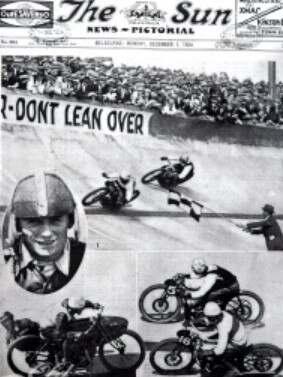
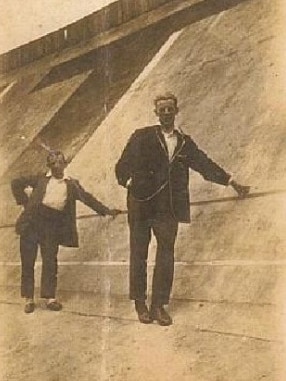
The banked track meant high speeds and big spills when cars or motorcycles came to grief.
The land was known as the Amateur Sports Ground before the land was leased from the state government.
After years of false starts, the track was established by a private company, Melbourne Carnivals, which was backed by racing baron John Wren.
It opened on November 29, 1924.
The first summer racing season ended two weeks early when three riders were killed in a horrific crash in March 1925, the first of many fatalities at the Motordrome including the deaths of two teenage boys — one decapitated — when they were hit by debris while hanging over the lip in a 1929 race crash.
The venue had a grassed oval that the VFA used for finals matches from 1925 to 1927. Melbourne also used it for three VFL matches in 1932 while resurfacing took place at the MCG.
A shambolic ostrich race meeting was held there in 1926.
With the surface deteriorating and the state government unlikely to renew Melbourne Carnival’s lease thanks to its deadly reputation, the concrete track was dynamited in 1933 and replaced by a dirt speedway circuit that remained in use until it was demolished in 1951 as Melbourne prepared for the Olympic Games.
ALTONA SPEEDWAY
Cherry Lake in Altona was, for a short time, the premier motorsport venue in the western suburbs.
Then a large swamp, it was home to a 2.25-mile (3.6km) bitumen circuit that cost the Victorian Sporting Car Club £35,000 ($1.2 million) to build.
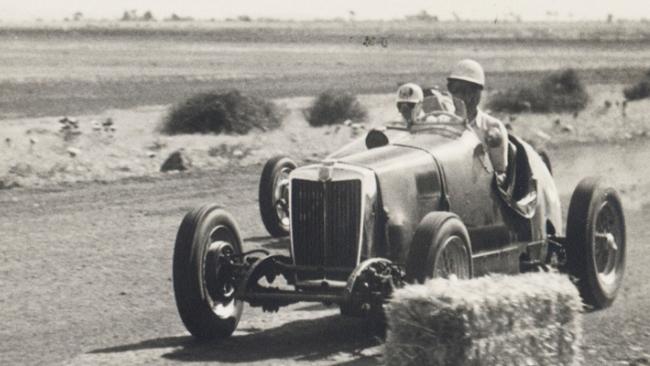
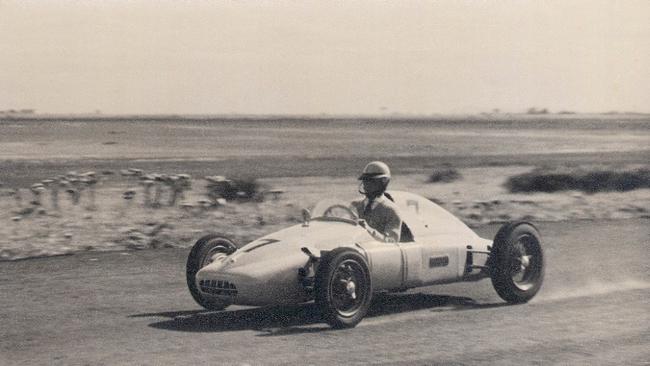
At the opening meeting in 1954, driver Stan Jones raced his Cooper Special against motorcycle sidecar rider Frank Sinclair on his Vincent Special in a time trial race billed as the first of its type in the world, with both vehicles capable of 130mph (208km/h). Jones won.
Future F1 World champion Jack Brabham also raced in a meeting at Altona.
There were plans for grandstands and permanent pit facilities, but riders at the first meeting, hosted by the Harley Club of Victoria, complained of lose stones and potholes developing on the track thanks to the soft ground around the swamp.
With other circuits developing at the same time, only five more meetings were held at Altona before the last race meeting at the track in May 1955.
A persistent flood all but destroyed the track that winter.

ALBERT PARK
The streets around Albert Park have been Formula 1’s place to race since 1996 — and Adelaide car buffs have never forgiven us for it.
But motor racing history at Albert Park goes further back than when Jeff Kennett waved a chequered flag there.
The Light Car Club of Australia, formed by members of the RACV in 1924, held race meetings in the streets around the lake between 1953 and 1958.
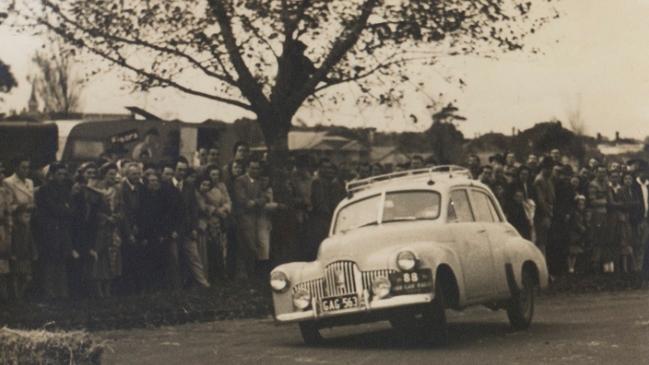
These included two Australian grands prix events (not affiliated with Formula 1) at Albert Park along with racing events sponsored by The Argus newspaper for Moomba and a December 1956 “Olympic” Australian GP that was won by F1 ace Stirling Moss, who drove a Maserati to victory.
The old Albert Park course had fewer chicanes than the modern variety, no grandstands and no facilities like the extensive pit area at Albert Park today.
It was a true street circuit with no special road engineering and no barriers.
The streets were lined with guttering, trees and power poles. And the record lap recorded by Stirling Moss there in 1958 was only 30 seconds slower than the fastest lap in the modern F1 era at Albert Park.
And unlike today’s circuit, drivers raced anticlockwise on the fast, flowing track.
The Light Car Club disbanded in 1992 but it gave a great deal to Australian motorsport.
It hosted Australian GP events at Phillip Island in the 1920s and ‘30s, built hill climb tracks in Christmas Hills and Lilydale, launched the Armstrong 500 at Phillip Island in 1960 (shifting the annual production sedan classic to Bathurst in 1963) ran motor racing events at Sandown in the 1960s and held Australian GP and Tasman Cup events at Sandown in later years.
READ MORE:
FIRST FALCON ALMOST ENDED OZ FORDS
RARE COLOUR PICS OF 1956 GAMES
FISHERMANS BEND
When you think of cars and Fishermans Bend, you tend to think of Holden, but just down the road from Holden was another favourite location for car buffs — the Fishermans Bend Aerodrome.
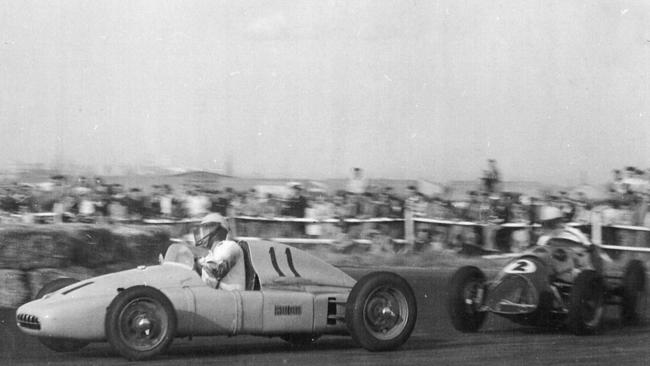
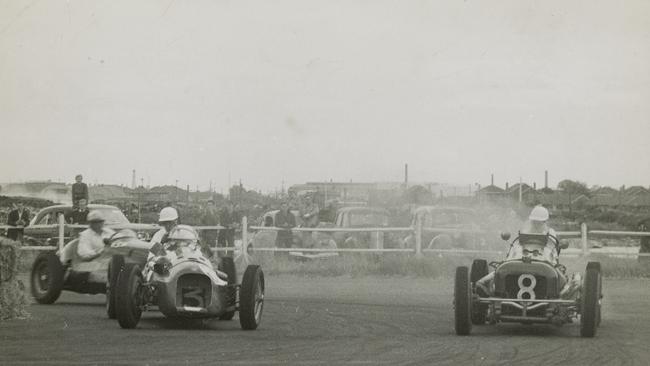
As war brewed in Europe in the 1930s, the aerodrome was built to cater for the Government Aircraft Factories and Commonwealth Aircraft Corporation, which both constructed aircraft in Fishermans Bend.
The aerodrome was too small for post-war jet production, but it proved popular with racers.
Those long, straight runways were punctuated with bends at the end of the straights that were fashioned from hay bales.
Cars and motorcycles raced there from the late 1940s to around 1960, but drag racing meetings were held there in the late ’60s until the aerodrome land was redeveloped for industrial use.
@JDwritesalot


